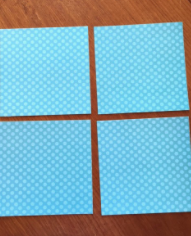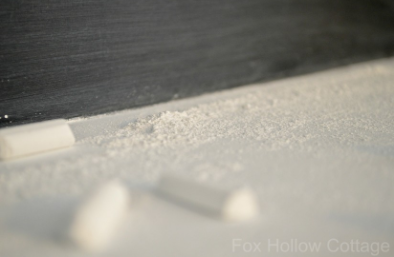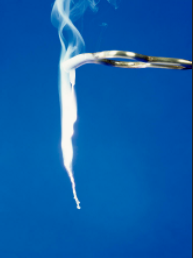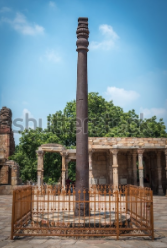NCERT Solutions For Class 7 Science Chapter 6 Physical and Chemical Changes, here we are going to give you a summary of this chapter with questions and answers from the textbook. In this chapter, we will study the nature of some Physical and Chemical Changes, its meanings and we will do some experiments on Physical and Chemical Changes. That is to say, your all doubts from this chapter will be cleared from this.
Read more: NCERT Solutions For Class 7 Science Chapter 14 Electric Current and Its Effects
Table of Contents
NCERT Solutions For Class 7 Science Chapter 6 Physical and Chemical Changes: Introduction
We always see a lot of changes in our surroundings. We dissolve sugar in tea, see setting of curd from milk, sometimes see milk become sour and many more. Stretched rubber band also represents change. We can broadly define changes in two types from scientific way: Physical and Chemical Changes. Let us study them in details with one by one and also do some experiments to understand the chapter NCERT Solutions For Class 7 Science Chapter 6 Physical and Chemical Changes better and deeply.
Physical Changes
We do some activities/ experiments first.
Activity 1-NCERT Solutions For Class 7 Science Chapter 6 Physical and Chemical Changes
If we cut a paper in four square pieces, we cannot join the pieces back to make the original piece, but there is no change in the property of the paper.

Activity 2-NCERT Solutions For Class 7 Science Chapter 6 Physical and Chemical Changes
Similarly if we collect some chalk dust lying and add water to it to make a paste. We roll it into the shape of a piece of chalk. We let it dry.
Can we recover chalk from the dust? The answer is yes but we see that piece of chalk underwent changes in size.

Activity 3-NCERT Solutions For Class 7 Science Chapter 6 Physical and Chemical Changes
Firstly, we take some ice in a glass or plastic tumbler and melt a small portion of ice by placing the tumbler in the sun. We now have a mixture of ice and water. Further, let us place the tumbler in a freezing mixture (ice plus common salt).
Does the water become solid ice once again? The answer is no.
Activity 4-NCERT Solutions For Class 7 Science Chapter 6 Physical and Chemical Changes
Let us boil some water in a container. We see the steam rising from the surface of water. Let us hold an inverted pan by its handle over the steam at some distance from the boiling water. We observe the inner surface of the pan.
Can we see any droplet of water there? The answer is yes, because water changed its state (from solid to liquid, or from gas to liquid).
Activity 5 -NCERT Solutions For Class 7 Science Chapter 6 Physical and Chemical Changes
We hold a used hack-saw blade with a pair of tongs. Let us keep the tip of the free end on the flame of a gas stove. Wait for a few minutes.
Does the colour of the tip of the blade change? The answer is the hack-saw blade changed colour on heating.
Let us remove the blade from the flame. We observe the tip once again after some time. Does it get back its original colour? The answer is yes, it changed.
Therefore Physical changes have these properties:
- Physical properties are properties like shape, size, colour and state of a substance. Changes in these properties are known as physical changes.
- However, no new substance is formed in these changes.
- These changes are generally reversible
Chemical Changes
We know the rusting of iron. The substance is called rust that covers as the brownish film on top of a piece of iron kept in open and the process is called rusting.
Activity 6-NCERT Solutions For Class 7 Science Chapter 6 Physical and Chemical Changes
We get a small piece of a thin strip or ribbon of magnesium. We clean its tip with sandpaper then bring the tip near a candle flame. Brilliant white flame is observed. It leaves behind a powdery ash. The ash does not look like the magnesium ribbon. It’s equation is given below:
Magnesium (Mg) + Oxygen (O2) → Magnesium oxide (MgO)

A new substance is formed when we dissolve the ashes into water. It’s equation is given below:
Magnesium oxide (MgO) + Water (H2O) → Magnesium hydroxide [Mg(OH)2]
We know that magnesium hydroxide is a base. So, magnesium oxide is a new substance formed on burning of magnesium. Magnesium hydroxide is another new substance formed by mixing magnesium oxide with water.
Activity 7-NCERT Solutions For Class 7 Science Chapter 6 Physical and Chemical Changes
Firstly, let us dissolve a teaspoonful of copper sulphate (blue vitriol or neela thotha) in about half a cup of water in a glass tumbler or a beaker. Secondly, we will add a few drops of dilute sulphuric acid to the solution. As a result, we get a blue coloured solution. Further, let us save a small sample of the solution in a test tube or a small glass bottle. We drop a nail or a used shaving blade into the remaining solution. Wait for half an hour or so. We observe the colour of the solution. Subsequently, let us compare it with the colour of the sample solution saved separately.
We see that the copper sulphate solution is blue in colour but after adding iron it becomes green in colour.
These changes are due to a reaction between copper sulphate and iron. A new substance is formed and thus the colour changes from blue to green. Another new substance is formed, the brown deposit on the iron nail is copper.
It’s equation is given below:
Copper sulphate solution (blue) + Iron → Iron sulphate solution (green) + Copper (brown deposit)
Activity 8-NCERT Solutions For Class 7 Science Chapter 6 Physical and Chemical Changes
We take about a teaspoonful of vinegar in a test tube. Let us add a pinch of baking soda to it. We hear a hissing sound and see bubbles of gas coming out. Let us pass this gas through freshly prepared lime water. Lime water changes to Calcium Carbonate.
Change in the test tube is as follows:
Vinegar (Acetic acid) + Baking soda (Sodium hydrogen carbonate) → Carbon dioxide + other substances
Likewise, reaction between carbon dioxide and lime water is as follows:
Carbon dioxide (CO2) + Lime water [Ca(OH)2] → Calcium Carbonate (CaCO3) + Water (H2O)
Therefore Chemical change have these properties:
- A chemical reaction or Chemical change is a change in which one or more new substances are formed.
- Every new material is discovered by studying chemical changes
- Heat, light or any other radiation (ultraviolet, for example) may be given off or absorbed.
- The sound may be produced.
- A change in smell may take place or a new smell may be given off
- A colour change may take place.
- A gas may be formed.
- Similarly, the burning of any substance is a chemical change.
When food gets spoiled, it produces a foul smell. We also call this change a chemical change. The change of colour in these cases is due to the formation of new substances.
Rusting of Iron
Iron articles are slowly destroyed by rust. Iron is used to make a lot of articles, rust destroys these articles and thus a lot of money is lost to rust.
The process of rusting can be represented by the following equation:
Iron (Fe) + Oxygen (O2, from the air) + Water (H2O) → Rust (iron oxide Fe2O3)
Both oxygen and water (or water vapour) is essential for rusting to become.
Rusting becomes faster when humidity is high. The saltwater also makes the process of rust formation faster.
Prevention of rusting:
- Prevent iron articles from coming in contact with oxygen, or water, or both
- Meanwhile, apply a coat of paint or grease.
- Deposit a layer of a metal like chromium or zinc on iron (galvanisation).
Stainless steel is made by mixing iron with carbon and metals like chromium, nickel and manganese. It does not rust.

Crystallisation
Salt obtained by evaporation of seawater is not pure and its crystals are small. Large crystals of pure substances can be formed from their solutions. This process is called crystallisation. It is a physical change.
Activity 9-NCERT Solutions For Class 7 Science Chapter 6 Physical and Chemical Changes
We take a cupful of water in a beaker and add a few drops of dilute sulphuric acid.
Firstly, let us heat water. When it starts boiling we add copper sulphate powder slowly while stirring continuously. We continue adding copper sulphate powder till no more powder can be dissolved. We filter the solution. Let us allow it to cool. We shall not disturb the solution when it is cooling. Let us look at the solution after some time. As a result, now we can see the crystals of copper sulphate. If not, we shall wait for some more time.

NCERT Solutions For Class 7 Science Chapter 6 Physical and Chemical Changes – Conclusion
In conclusion, we learned a lot about NCERT Solutions For Class 7 Science Chapter 6 Physical and Chemical Changes. As a result, we can identify changes in our own environment now. NCERT Solutions For Class 7 Science Chapter 6 Physical and Chemical Changes are given by our expertise.
Meanwhile, some extra note for NCERT Solutions For Class 7 Science Chapter 6 Physical and Chemical Changes are given below:
- Stainless steel is made by mixing iron with carbon and metals like chromium, nickel and manganese. Therefore it does not rust.
- The ozone layer protects us from the harmful ultraviolet radiation which comes from the sun that may cause harm to life on Earth. Ozone absorbs this radiation and breaks down to oxygen. Oxygen is different from ozone. Ozone acts as a natural shield against this radiation. Breaking down of ozone is a chemical change which is taking place due to pollution these days.
- Near the Qutub Minar in Delhi stands an iron pillar which is more than 7 metres high. It weighs more than 6000 kg. It was built more than 1600 years ago. Moreover, After such a long period it has not rusted. For its quality of rust resistance it has been examined by scientists from all parts of the world. Likewise, it tells something about the advances India had made in metal technology as back as 1600 years ago.

NCERT Solutions For Class 7 Science Chapter 6 Physical and Chemical Changes: Exercises
Find NCERT Solutions For Class 7 Science Chapter 6 Physical and Chemical Changes below :
1. Classify the changes involved in the following processes as physical or chemical changes:
(a) Photosynthesis – chemical change
(b) Dissolving sugar in water – physical change
(c) Burning of coal – chemical change
(d) Melting of wax – physical change
(e) Beating aluminum to make aluminum foil – physical change
(f ) Digestion of food – chemical change
2. State whether the following statements are true or false.
(a) Cutting a log of wood into pieces is a chemical change. (True/False)
Ans. False
(b) Formation of manure from leaves is a physical change. (True/False)
Ans. False
(c)Iron pipes coated with zinc do not get rusted easily. (True/False)
Ans. True
(d) Iron and rust are the same substances. (True/False)
Ans. False
(e) Condensation of steam is not a chemical change. (True/False)
Ans. True
3. Fill in the blanks in the following statements:
(a) When carbon dioxide is passed through lime water, it turns milky
due to the formation of calcium carbonate .
(b) The chemical name of baking soda is Sodium hydrogen carbonate.
(c) Two methods by which rusting of iron can be prevented are avoiding touch with air or water and coating with grease or paint.
(d) Changes in which only physical properties of a substance change are called physical changes.
(e) Changes in which new substances are formed are called chemical changes.
4. When baking soda is mixed with lemon juice, bubbles are formed with the evolution of a gas. What type of change is it?
Ans. When baking soda is mixed with lemon juice, bubbles are formed with
the evolution of a gas it is a chemical change.
5. When a candle burns, both physical and chemical changes take place.
Identify these changes. Give another example of a familiar process in
which both the chemical and physical changes take place.
Ans. When a candle burns the flame is undergoing a chemical change as the flame burns and produces heat and light. But the wax melts and becomes liquid from solid thus it is a physical change.
6. How would you show that setting of curd is a chemical change?
Ans. Setting of curd is a chemical change because it gives a new substance. Milk turns to curd which is totally different from milk thus it is a chemical change.
7. Explain why burning of wood and cutting it into small pieces are
considered as two different types of changes.
Ans. When we burn wood, it combines with oxygen to give heat and fire (light) to give ashes a new substance, thus it is a chemical change.
But when we cut it the wood stays wood and no new substance is formed thus it is a physical change.
8. Describe how crystals of copper sulphate are prepared.
Ans. The process of formation of crystals of copper sulphate is given below:
- Let us heat the water. When it starts boiling we add copper sulphate powder slowly while stirring continuously.
- We continue adding copper sulphate powder till no more powder can be dissolved.
- We filter the solution. Let us allow it to cool.
- We shall not disturb the solution when it is cooling. Let us look at the solution after some time.
- We see the crystals of copper sulphate. If not, we shall wait for some more time.
9. Explain how painting of an iron gate prevents it from rusting.
Ans. Painting of an iron gate prevents it from rusting because iron needs air and water to form rust. By painting it the contact of the iron surface with the water and air becomes minimum thus, painting prevents iron gate prevents it from rusting.
10. Explain why rusting of iron objects is faster in coastal areas than in
deserts.
Ans. In coastal areas there is more sea water compared to deserts, thus in coastal areas the iron rusts faster.
11. The gas we use in the kitchen is called liquified petroleum gas (LPG). In the cylinder it exist as a liquid. When it comes out from the cylinder it becomes a gas (Change – A) then it burns (Change – B). The following statements pertain to these changes. Choose the correct one.
(i) Process – A is a chemical change.
(ii) Process – B is a chemical change.
(iii) Both processes A and B are chemical changes.
(iv) None of these processes is a chemical change.
Ans. (ii) is the correct answer.
12. Anaerobic bacteria digest animal waste and produce biogas (Change – A). The biogas is then burnt as fuel (Change – B). The following
statements pertain to these changes. Choose the correct one.
(i) Process – A is a chemical change.
(ii) Process – B is a chemical change.
(iii) Both processes A and B are chemical changes.
(iv) None of these processes is a chemical change.
Ans. (iii) is the correct answer.
NCERT Solutions For Class 7 Science Chapter 6 Physical and Chemical Changes are explained above with our expertise .





